In the natural world, some creatures can alter the will of others, turning them into real-life zombies. We are not talking about viruses or bacteria, but about parasitic fungi capable of manipulating the behavior of insects and spiders to ensure their own survival and propagation. These microscopic life forms deploy strategies worthy of a horror movie, proving how evolution can be both ruthless and fascinating.
The Rule of Ophiocordyceps unilateralis: The Fungus That Commands Ants
One of the most well-known cases is that of Ophiocordyceps unilateralis, a parasitic fungus that targets carpenter ants. When the fungus' spores come into contact with a host, they penetrate its exoskeleton and start growing inside its body. The fungus releases chemicals that alter the ant's behavior, making it leave the nest and climb up a plant. Here, the insect latches onto a leaf and dies shortly after. The mature fungus then emerges from the ant's head, releasing new spores to infect other victims. This infernal cycle is so effective that the phenomenon is called "programmed death."
Studies conducted in the Amazon rainforest have observed infected ants clinging to leaves with their mandibles, positioned in specific ways to maximize spore dispersal. In some cases, groups of healthy worker ants remove and isolate the infected corpses to protect the colony from fungal contamination.
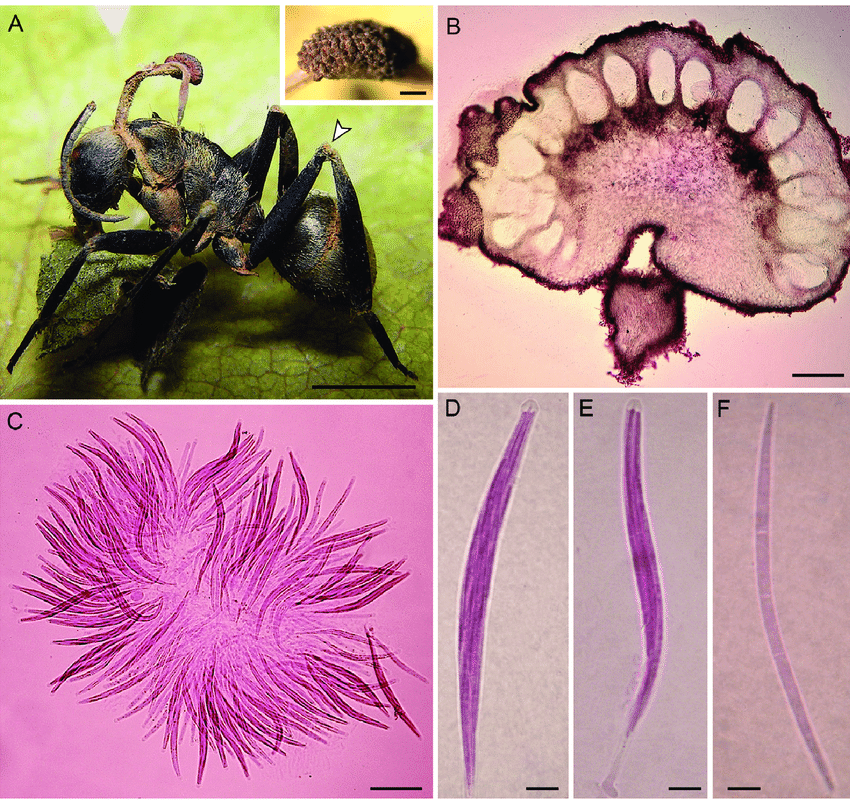
Ophiocordyceps unilateralis epitype VIC 44303 on Camponotus sericeiventris A Golden - (Researchgate.net)
Gibellula attenboroughii: The Nightmare of Spiders
If Ophiocordyceps is the nightmare of ants, spiders must fear Gibellula attenboroughii. This fungus, discovered in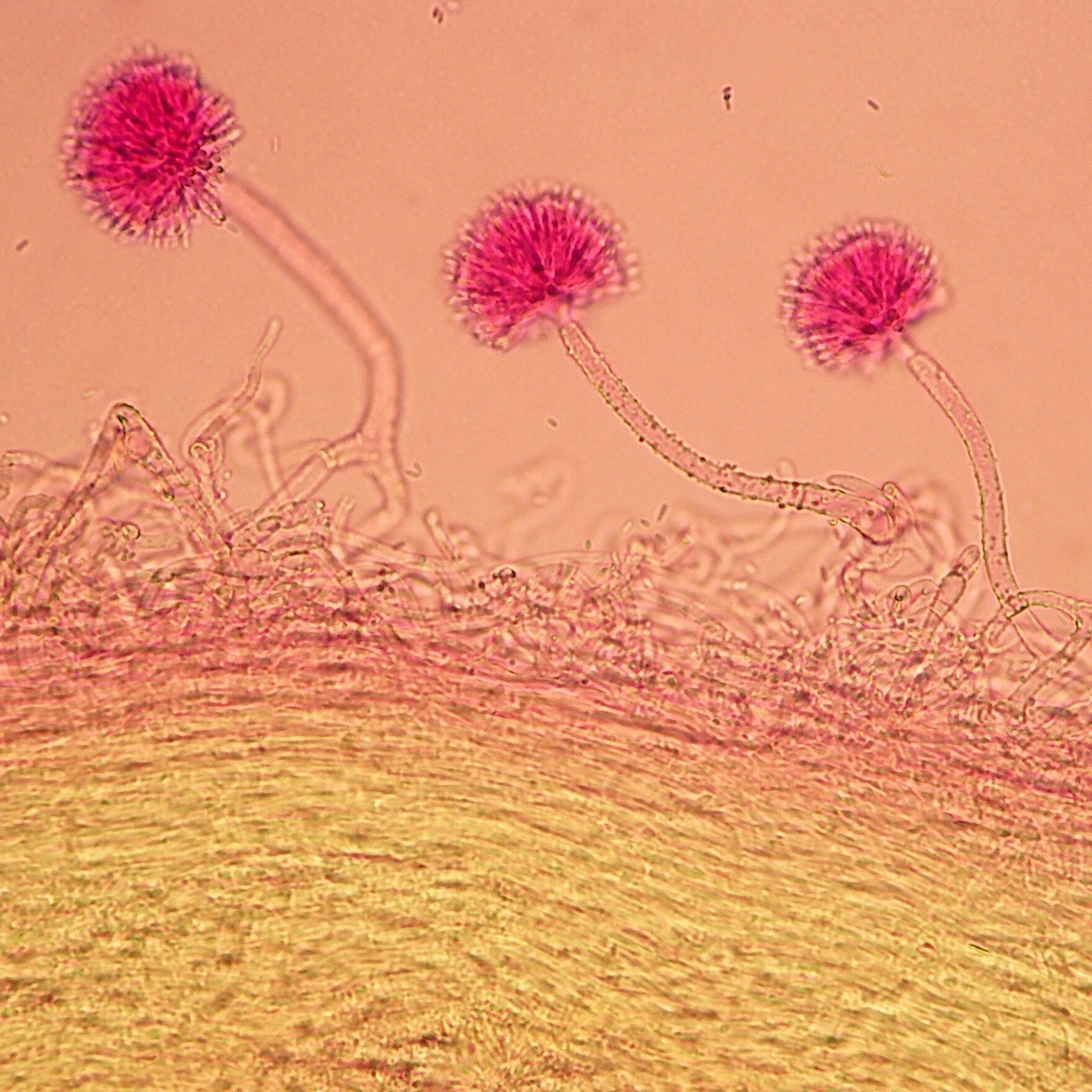 the United Kingdom and named after Sir David Attenborough, exclusively targets spiders. After infecting its host, the fungus spreads through its tissues and alters its behavior, forcing it to stay motionless in an ideal position for the next spore release. The spider is slowly consumed from within, and eventually, the fungus emerges from its lifeless body, covering it in a ghostly white structure that looks straight out of a nightmare.
the United Kingdom and named after Sir David Attenborough, exclusively targets spiders. After infecting its host, the fungus spreads through its tissues and alters its behavior, forcing it to stay motionless in an ideal position for the next spore release. The spider is slowly consumed from within, and eventually, the fungus emerges from its lifeless body, covering it in a ghostly white structure that looks straight out of a nightmare.
Field observations in rainforests have documented infected spiders frozen in unnatural positions, their bodies engulfed in fungal filaments. In some cases, the fungus takes weeks to fully develop before releasing new spores.
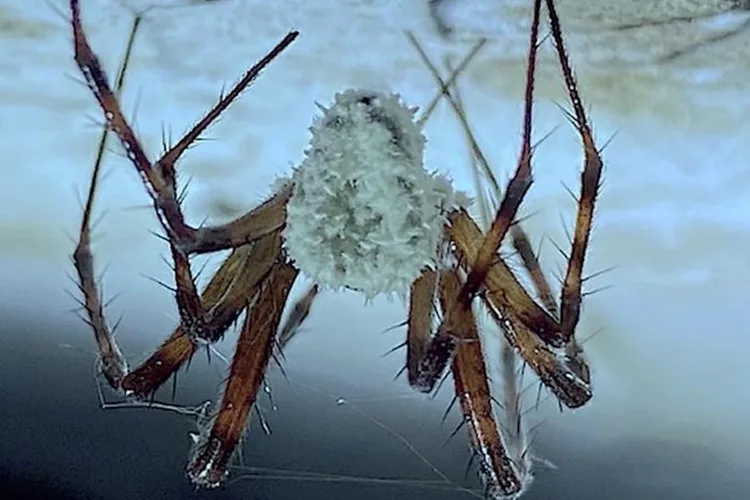
The new fungus Gibellula attenboroughii on the orb weaving cave spider
Ophiocordyceps sphecocephala: The Wasp Parasite
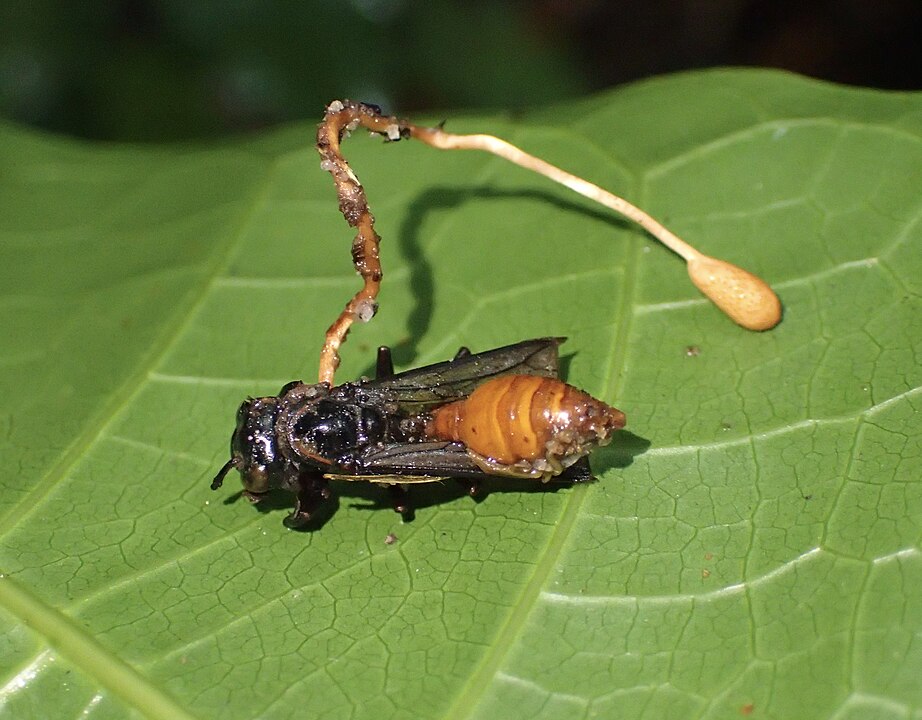 Another terrifying example is Ophiocordyceps sphecocephala, a parasitic fungus that infects wasps of the genera Polistes, Tachytes, and Vespa. Found across the Americas and China, it takes control of the infected wasp, driving it to the highest possible location before the fungus sprouts from its body.
Another terrifying example is Ophiocordyceps sphecocephala, a parasitic fungus that infects wasps of the genera Polistes, Tachytes, and Vespa. Found across the Americas and China, it takes control of the infected wasp, driving it to the highest possible location before the fungus sprouts from its body.
Physically, its stromata can grow between 2–10 cm, forming an egg-shaped head. It is typically cream or yellow in color. Interestingly, Ophiocordyceps sphecocephala has potential medical applications, as research suggests it may possess anti-asthmatic and anti-cancer properties.
Other Incredible Parasitic Fungi
Beyond Ophiocordyceps and Gibellula, other entomopathogenic fungi display equally shocking strategies:
Massospora cicadina: Infects cicadas and releases chemicals that make them hypersexual, promoting fungal spread during mating.
Cordyceps militaris: A parasite of insects that is also valued in traditional Asian medicine for its purported health benefits.
Are Parasitic Fungi Dangerous to Humans?
If these fungi can control insects' minds, could they ever evolve to infect humans? Fortunately, there is no evidence that Ophiocordyceps or Gibellula can parasitize mammals. However, fungal infections in humans are an increasing concern. Fungi like Candida auris, Aspergillus, and Cryptococcus can cause severe illnesses, particularly in immunocompromised individuals.
Another growing concern is antifungal drug resistance. Because fungi are eukaryotic organisms, like humans, developing effective treatments is more challenging than treating bacterial infections. Recent studies suggest that some parasitic fungi might evolve to infect new species, although the risk to humans remains extremely low.
Scientific and Cultural Implications
Parasitic fungi are not only a fascinating subject for science but have also inspired popular culture. The famous video game The Last of Us is based on the idea of a mutated Cordyceps capable of infecting humans. Although fictional, this scenario raises intriguing questions about how a simple fungus could alter entire ecosystems—and even civilization itself.
Nature is the True Horror
Parasitic fungi remind us that nature is not just beautiful, but also terrifying. Their ability to control the behavior of other creatures is one of the most astonishing and eerie aspects of evolution. While we do not need to fear a fungal zombie apocalypse, studying these organisms could unlock new frontiers in science, from biotechnology to medicine. The fungal kingdom still holds many secrets—who knows what other surprises it may have in store for us?
Sources:





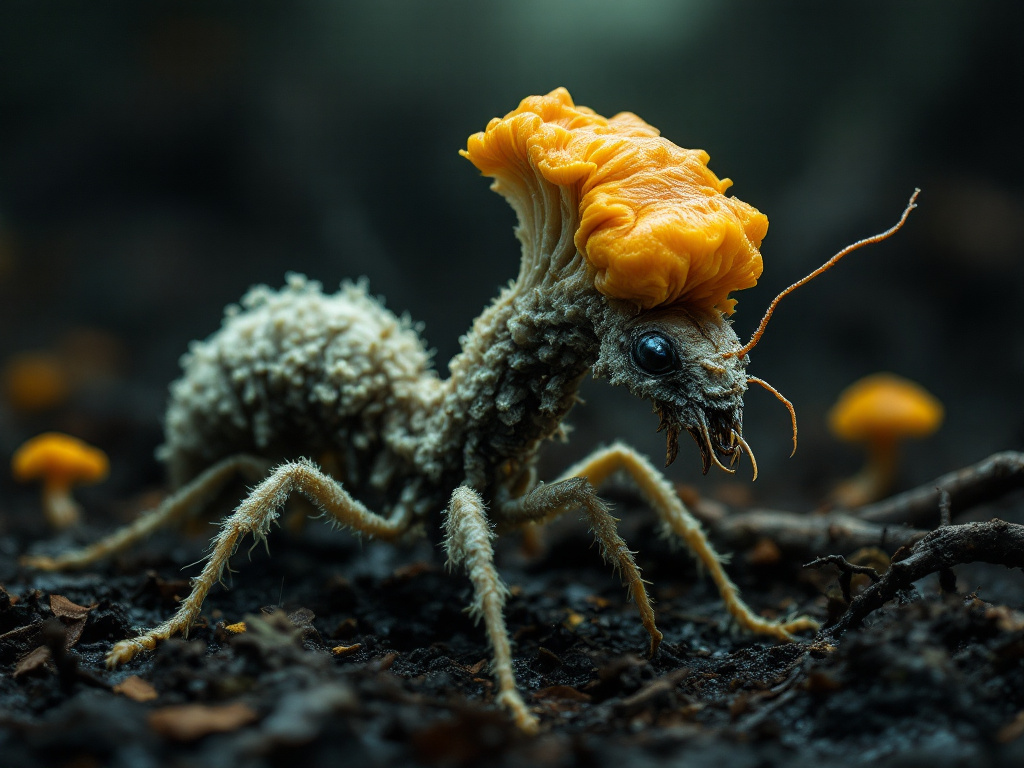


Leave a Comment